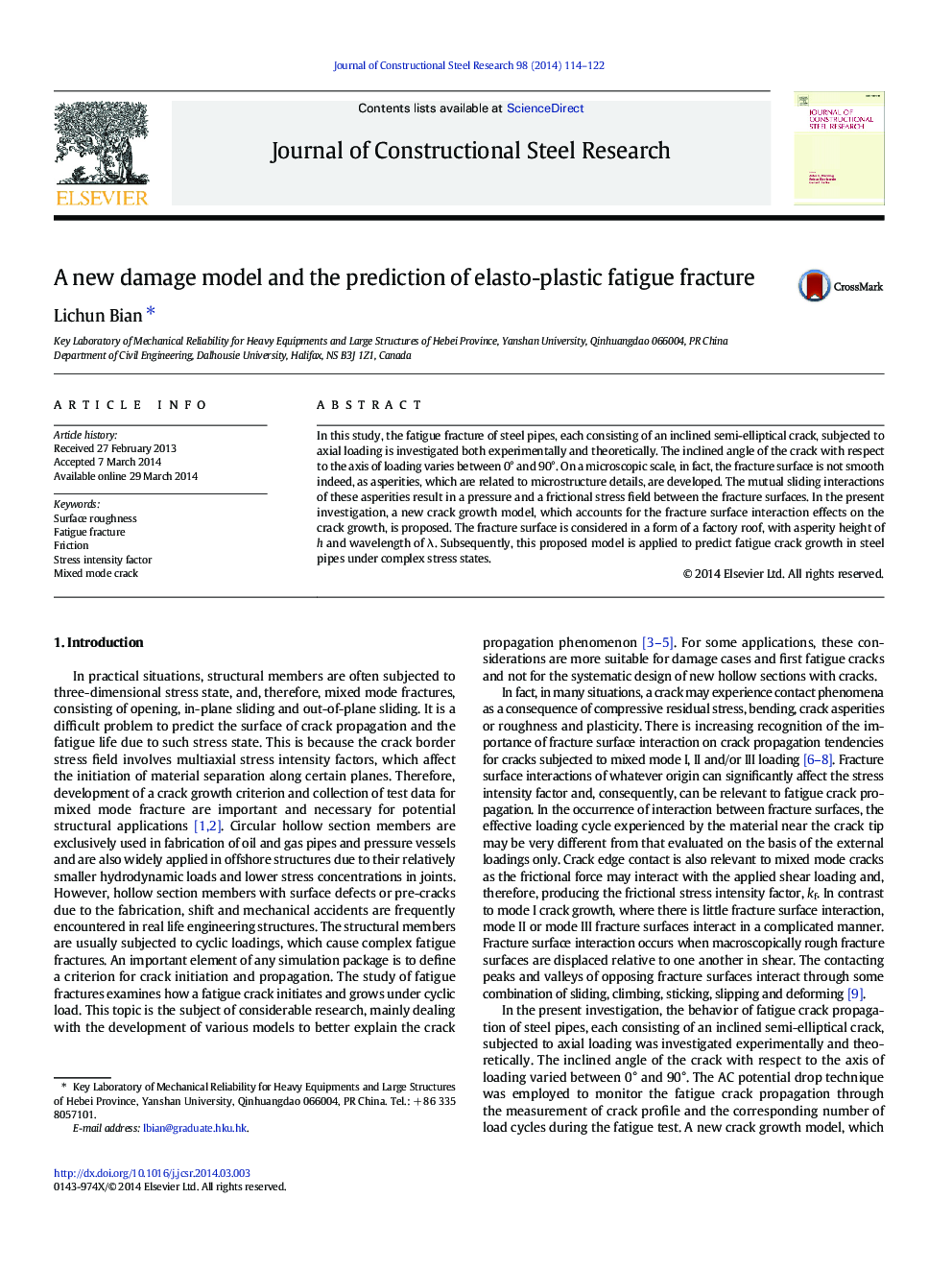| Article ID | Journal | Published Year | Pages | File Type |
|---|---|---|---|---|
| 284709 | Journal of Constructional Steel Research | 2014 | 9 Pages |
•For better predicting fatigue crack growth, a maximum shear stress model is proposed.•This model accounts for the fracture surface interaction effects on the crack growth.•Fracture surface is with asperities and can be considered in a form of factory roof.•Fatigue crack growth rate is a function of effective stress intensity factor range.•Model proposed can predict fatigue crack growth in steel pipes under complex loading.
In this study, the fatigue fracture of steel pipes, each consisting of an inclined semi-elliptical crack, subjected to axial loading is investigated both experimentally and theoretically. The inclined angle of the crack with respect to the axis of loading varies between 0° and 90°. On a microscopic scale, in fact, the fracture surface is not smooth indeed, as asperities, which are related to microstructure details, are developed. The mutual sliding interactions of these asperities result in a pressure and a frictional stress field between the fracture surfaces. In the present investigation, a new crack growth model, which accounts for the fracture surface interaction effects on the crack growth, is proposed. The fracture surface is considered in a form of a factory roof, with asperity height of h and wavelength of λ. Subsequently, this proposed model is applied to predict fatigue crack growth in steel pipes under complex stress states.
